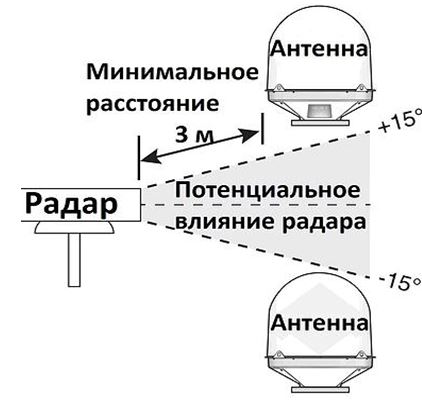Features of construction of leisure TV system on board
Features of construction of leisure TV system on board
24.06.2015

Now, marine satellite TV systems are widespread due to several reasons:
1) installation of such systems increases the comfort and classiness of the vessel, as it allows passengers to get high-speed access to what they are used to use continually, namely television and Internet (which ultimately increases shipowner revenues);
2) the opportunity to improve living and working conditions of the crew..
What is necessary for the organization of TV system on the ship?
The basic configuration of the television system includes:
- satellite TV-antenna, located in the ADE of the ship (Above Deck Unit - ADU). Such antennas are Navcom Intellian, Navcom SatFlower, Marine Radio / TV antenna SAILOR Mark 32ALC,
- antenna controller (Below Deck Unit - BDU);
- multiswitch;
- satellite receiver (s) of a television signal;
- televisions;set of connecting cables.
All packaging You can specify and order from us.

Today, approximately 15-17 Russian channels are broadcasted through satellites and a larger number of foreign channels (unencrypted for viewing which is not require a monthly fee, and coded). But the choice of programs is substantially limited by the course of the ship, its port of registry and moorage, and is directly dependent on the satellite coverage area. The difficulty is to install satellite antenna in restricted areas of DF decks, so, on the one hand, there should be no shading objects in the receiving direction within a predetermined elevation angle which is leading to the reduction in signal level, and at the same time, according to the manufacturers recommendations it is necessary to avoid direct impact of radar antennas, focusing on the minimum solid angle of ± 15-20 °.
On the other hand, there is a need to ensure the minimum possible distance between the antenna and the receiver based on signal attenuation in the connection cable in order to avoid the use of repeaters. There is one solution to identify problem and it is the use of the antenna larger diameter (and the gain due to a narrower beam) LNB LNB (Low-Noise Block downconverter) high gain and coaxial cable with less attenuation. It is also economically feasible the networking of terrestrial and satellite television antennas (joint standards DVB-T / T2 and DVB-CS, respectively) by integrating into a special switch or channel combiner. This will be carried out in Harbour receiving terrestrial TV signals in the VHF and UHF, reducing the load on the satellite channels.
Leading manufacturers of modern systems of satellite television (SeaTel, KVH Industries, Intellian Technology, etc.) offer a range of short-focus antennas with a mirror diameter of 32 to 76 cm to be installed on low-tonnage ships. Especially for these systems load and rolling storm are critical, so they implemented stabilization technology and continuous satellite-tracking. Distributive wired networks, organized in this case, much less inherent complexity of the structure than similar networks of large vessels. However, there is one effective solution to this field is to use radio transmitters for broadcasting within the vessel. This will provide the ability to watch programs in the cabins and other targeted areas without cabling. This announcement is available in an area of up to 10-12 miles, for example, in neighboring vessels.
Prospects for the development of satellite digital TV broadcasting is currently associated with the announced in March 2014 an extension of the standard DVB-S2 - DVB-S2X.
Specification of DVB-S2X allows you to use the latest video compression technology HEVC, which supports the frame formats 4K and 8K UHDTV Ultra High Definition Television, gradually gaining popularity. In addition, still realized adaptive coded modulation (ACM), which provides a flexible data transfer (a change in the coding rate and modulation format), customized for the parameters of the receiving equipment. Thus, the ACM mode allow to reach maximum speed.
You can call to make a request for equipment by sending a request by e-mail cirspb@mail.ru. On questions contact the service department by phone in St. Petersburg (+7 812) 445-27-01, and 79045531441, Petrozavodsk: (+7 8142) 57-80-30 and (+7 8142) 57-00-03 .
 +7 (812) 4-673-673
+7 (812) 4-673-673